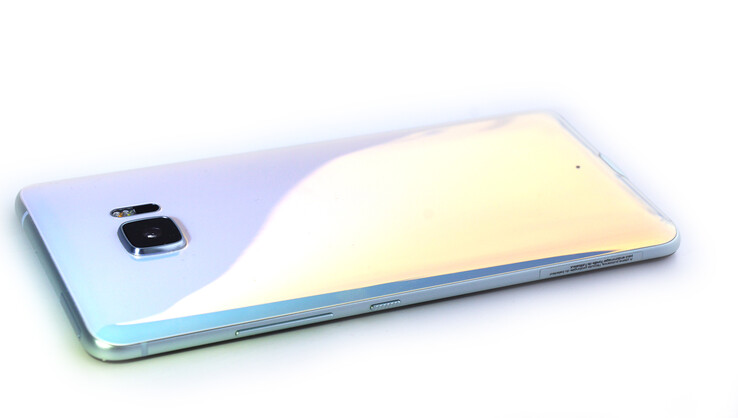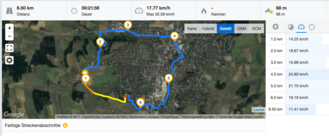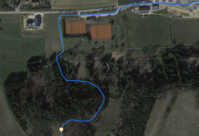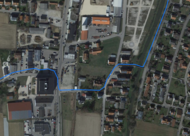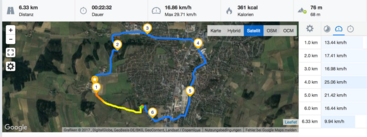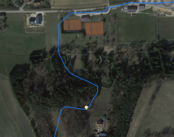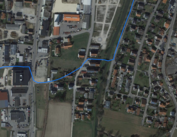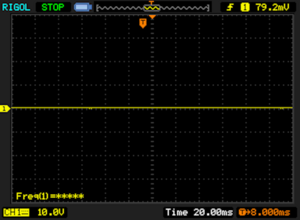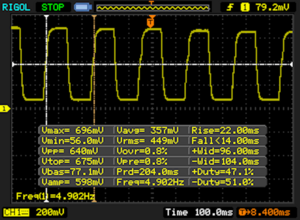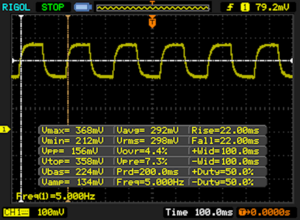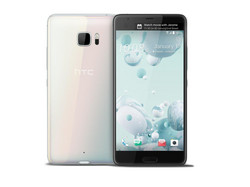Breve Análise do Smartphone HTC U Ultra
Os Top 10
» Os Top 10 Portáteis Multimídia
» Os Top 10 Portáteis de Jogos
» Os Top 10 Portáteis Leves para Jogos
» Os Top 10 Portáteis Acessíveis de Escritório/Empresariais
» Os Top 10 Portáteis Premium de Escritório/Empresariais
» Os Top 10 dos Portáteis Workstation
» Os Top 10 Subportáteis
» Os Top 10 Ultrabooks
» Os Top 10 Conversíveis
» Os Top 10 Tablets
» Os Top 10 Smartphones
» A melhores Telas de Portáteis Analisadas Pela Notebookcheck
» Top 10 dos portáteis abaixo dos 500 Euros da Notebookcheck
» Top 10 dos Portáteis abaixo dos 300 Euros
Size Comparison
| Networking | |
| iperf3 transmit AX12 | |
| Google Pixel XL 2016 | |
| Samsung Galaxy S7 Edge | |
| HTC U Ultra | |
| LG G6 | |
| iperf3 receive AX12 | |
| Google Pixel XL 2016 | |
| LG G6 | |
| Samsung Galaxy S7 Edge | |
| HTC U Ultra | |
| |||||||||||||||||||||||||
iluminação: 88 %
iluminação com acumulador: 470 cd/m²
Contraste: 2136:1 (Preto: 0.22 cd/m²)
ΔE ColorChecker Calman: 5.5 | ∀{0.5-29.43 Ø4.78}
ΔE Greyscale Calman: 7.6 | ∀{0.09-98 Ø5}
98.7% sRGB (Calman 2D)
Gamma: 2.2
CCT: 7454 K
| HTC U Ultra SLCD 5, 2560x1440, 5.7" | Apple iPhone 7 Plus IPS, 1920x1080, 5.5" | Google Pixel XL 2016 AMOLED, 2560x1440, 5.5" | Samsung Galaxy S7 Edge Super AMOLED, 2560x1440, 5.5" | LG G6 IPS LCD, 2880x1440, 5.7" | |
|---|---|---|---|---|---|
| Screen | 25% | 13% | 46% | 21% | |
| Brightness middle (cd/m²) | 470 | 557 19% | 402 -14% | 554 18% | 646 37% |
| Brightness (cd/m²) | 445 | 553 24% | 408 -8% | 552 24% | 611 37% |
| Brightness Distribution (%) | 88 | 97 10% | 85 -3% | 96 9% | 89 1% |
| Black Level * (cd/m²) | 0.22 | 0.35 -59% | 0.23 -5% | ||
| Contrast (:1) | 2136 | 1591 -26% | 2809 32% | ||
| Colorchecker dE 2000 * | 5.5 | 1.4 75% | 4 27% | 1.59 71% | 4.5 18% |
| Colorchecker dE 2000 max. * | 11.9 | 3.1 74% | 10.1 15% | 2.56 78% | 8.3 30% |
| Greyscale dE 2000 * | 7.6 | 1.3 83% | 3.2 58% | 2.01 74% | 6 21% |
| Gamma | 2.2 100% | 2.21 100% | 2.19 100% | 2.01 109% | 2.27 97% |
| CCT | 7454 87% | 6667 97% | 7037 92% | 6321 103% | 7996 81% |
| Color Space (Percent of AdobeRGB 1998) (%) | 63.1 | 82.12 | 67.74 | ||
| Color Space (Percent of sRGB) (%) | 99.83 | 99.98 | 99.05 |
* ... menor é melhor
Cintilação da tela / PWM (modulação por largura de pulso)
| Tela tremeluzindo / PWM não detectado | |||
[pwm_comparison] Em comparação: 53 % de todos os dispositivos testados não usam PWM para escurecer a tela. Se PWM foi detectado, uma média de 8111 (mínimo: 5 - máximo: 343500) Hz foi medida. | |||
Exibir tempos de resposta
| ↔ Tempo de resposta preto para branco | ||
|---|---|---|
| 36 ms ... ascensão ↗ e queda ↘ combinadas | ↗ 22 ms ascensão | |
| ↘ 14 ms queda | ||
| A tela mostra taxas de resposta lentas em nossos testes e será insatisfatória para os jogadores. Em comparação, todos os dispositivos testados variam de 0.1 (mínimo) a 240 (máximo) ms. » 93 % de todos os dispositivos são melhores. Isso significa que o tempo de resposta medido é pior que a média de todos os dispositivos testados (20.2 ms). | ||
| ↔ Tempo de resposta 50% cinza a 80% cinza | ||
| 44 ms ... ascensão ↗ e queda ↘ combinadas | ↗ 22 ms ascensão | |
| ↘ 22 ms queda | ||
| A tela mostra taxas de resposta lentas em nossos testes e será insatisfatória para os jogadores. Em comparação, todos os dispositivos testados variam de 0.165 (mínimo) a 636 (máximo) ms. » 72 % de todos os dispositivos são melhores. Isso significa que o tempo de resposta medido é pior que a média de todos os dispositivos testados (31.6 ms). | ||
| AnTuTu v6 - Total Score (classificar por valor) | |
| HTC U Ultra | |
| Apple iPhone 7 Plus | |
| Google Pixel XL 2016 | |
| Samsung Galaxy S7 Edge | |
| LG G6 | |
| Geekbench 4.0 | |
| 64 Bit Single-Core Score (classificar por valor) | |
| HTC U Ultra | |
| Apple iPhone 7 Plus | |
| Google Pixel XL 2016 | |
| Samsung Galaxy S7 Edge | |
| 64 Bit Multi-Core Score (classificar por valor) | |
| HTC U Ultra | |
| Apple iPhone 7 Plus | |
| Google Pixel XL 2016 | |
| Samsung Galaxy S7 Edge | |
| GFXBench (DX / GLBenchmark) 2.7 | |
| T-Rex Onscreen (classificar por valor) | |
| HTC U Ultra | |
| Apple iPhone 7 Plus | |
| Google Pixel XL 2016 | |
| Samsung Galaxy S7 Edge | |
| LG G6 | |
| 1920x1080 T-Rex Offscreen (classificar por valor) | |
| HTC U Ultra | |
| Apple iPhone 7 Plus | |
| Google Pixel XL 2016 | |
| Samsung Galaxy S7 Edge | |
| LG G6 | |
| GFXBench 3.0 | |
| on screen Manhattan Onscreen OGL (classificar por valor) | |
| HTC U Ultra | |
| Apple iPhone 7 Plus | |
| Google Pixel XL 2016 | |
| Samsung Galaxy S7 Edge | |
| LG G6 | |
| 1920x1080 1080p Manhattan Offscreen (classificar por valor) | |
| HTC U Ultra | |
| Apple iPhone 7 Plus | |
| Google Pixel XL 2016 | |
| Samsung Galaxy S7 Edge | |
| LG G6 | |
| GFXBench 3.1 | |
| on screen Manhattan ES 3.1 Onscreen (classificar por valor) | |
| HTC U Ultra | |
| Apple iPhone 7 Plus | |
| Google Pixel XL 2016 | |
| Samsung Galaxy S7 Edge | |
| LG G6 | |
| 1920x1080 Manhattan ES 3.1 Offscreen (classificar por valor) | |
| HTC U Ultra | |
| Apple iPhone 7 Plus | |
| Google Pixel XL 2016 | |
| Samsung Galaxy S7 Edge | |
| LG G6 | |
| PCMark for Android - Work performance score (classificar por valor) | |
| HTC U Ultra | |
| Google Pixel XL 2016 | |
| Samsung Galaxy S7 Edge | |
| LG G6 | |
| Octane V2 - Total Score (classificar por valor) | |
| HTC U Ultra | |
| Apple iPhone 7 Plus | |
| Google Pixel XL 2016 | |
| Samsung Galaxy S7 Edge | |
| LG G6 | |
| Mozilla Kraken 1.1 - Total (classificar por valor) | |
| HTC U Ultra | |
| Apple iPhone 7 Plus | |
| Google Pixel XL 2016 | |
| Samsung Galaxy S7 Edge | |
| LG G6 | |
| JetStream 1.1 - Total Score (classificar por valor) | |
| HTC U Ultra | |
| Apple iPhone 7 Plus | |
| Google Pixel XL 2016 | |
| Samsung Galaxy S7 Edge | |
| LG G6 | |
* ... menor é melhor
| AndroBench 3-5 | |
| Sequential Read 256KB (classificar por valor) | |
| HTC U Ultra | |
| Google Pixel XL 2016 | |
| Samsung Galaxy S7 Edge | |
| LG G6 | |
| Sequential Write 256KB (classificar por valor) | |
| HTC U Ultra | |
| Google Pixel XL 2016 | |
| Samsung Galaxy S7 Edge | |
| LG G6 | |
| Random Read 4KB (classificar por valor) | |
| HTC U Ultra | |
| Google Pixel XL 2016 | |
| Samsung Galaxy S7 Edge | |
| LG G6 | |
| Random Write 4KB (classificar por valor) | |
| HTC U Ultra | |
| Google Pixel XL 2016 | |
| Samsung Galaxy S7 Edge | |
| LG G6 | |
| Sequential Read 256KB SDCard (classificar por valor) | |
| HTC U Ultra | |
| Samsung Galaxy S7 Edge | |
| LG G6 | |
| Sequential Write 256KB SDCard (classificar por valor) | |
| HTC U Ultra | |
| Samsung Galaxy S7 Edge | |
| LG G6 | |
(+) A temperatura máxima no lado superior é 36.9 °C / 98 F, em comparação com a média de 35.2 °C / 95 F , variando de 21.9 a 247 °C para a classe Smartphone.
(+) A parte inferior aquece até um máximo de 37.2 °C / 99 F, em comparação com a média de 34 °C / 93 F
(+) Em uso inativo, a temperatura média para o lado superior é 30.5 °C / 87 F, em comparação com a média do dispositivo de 32.9 °C / ### class_avg_f### F.
HTC U Ultra análise de áudio
(+) | os alto-falantes podem tocar relativamente alto (###valor### dB)
Graves 100 - 315Hz
(-) | quase nenhum baixo - em média 27.3% menor que a mediana
(±) | a linearidade dos graves é média (10.1% delta para a frequência anterior)
Médios 400 - 2.000 Hz
(+) | médios equilibrados - apenas 4.4% longe da mediana
(+) | médios são lineares (6.6% delta para frequência anterior)
Altos 2 - 16 kHz
(±) | máximos mais altos - em média 12.1% maior que a mediana
(+) | os máximos são lineares (6.3% delta da frequência anterior)
Geral 100 - 16.000 Hz
(±) | a linearidade do som geral é média (29% diferença em relação à mediana)
Comparado com a mesma classe
» 76% de todos os dispositivos testados nesta classe foram melhores, 3% semelhantes, 21% piores
» O melhor teve um delta de 11%, a média foi 35%, o pior foi 134%
Comparado com todos os dispositivos testados
» 87% de todos os dispositivos testados foram melhores, 2% semelhantes, 11% piores
» O melhor teve um delta de 4%, a média foi 24%, o pior foi 134%
Apple iPhone 7 Plus análise de áudio
(±) | o volume do alto-falante é médio, mas bom (###valor### dB)
Graves 100 - 315Hz
(-) | quase nenhum baixo - em média 24.1% menor que a mediana
(±) | a linearidade dos graves é média (7.4% delta para a frequência anterior)
Médios 400 - 2.000 Hz
(+) | médios equilibrados - apenas 4.7% longe da mediana
(±) | a linearidade dos médios é média (7.6% delta para frequência anterior)
Altos 2 - 16 kHz
(+) | agudos equilibrados - apenas 4.3% longe da mediana
(+) | os máximos são lineares (6.9% delta da frequência anterior)
Geral 100 - 16.000 Hz
(±) | a linearidade do som geral é média (22% diferença em relação à mediana)
Comparado com a mesma classe
» 45% de todos os dispositivos testados nesta classe foram melhores, 7% semelhantes, 48% piores
» O melhor teve um delta de 11%, a média foi 35%, o pior foi 134%
Comparado com todos os dispositivos testados
» 63% de todos os dispositivos testados foram melhores, 7% semelhantes, 31% piores
» O melhor teve um delta de 4%, a média foi 24%, o pior foi 134%
| desligado | |
| Ocioso | |
| Carga |
|
Key:
min: | |
| HTC U Ultra 3000 mAh | Apple iPhone 7 Plus 2915 mAh | Google Pixel XL 2016 3450 mAh | Samsung Galaxy S7 Edge 3600 mAh | |
|---|---|---|---|---|
| Power Consumption | 16% | 41% | 33% | |
| Idle Minimum * (Watt) | 1 | 0.77 23% | 0.53 47% | 0.63 37% |
| Idle Average * (Watt) | 2.41 | 2.04 15% | 1.07 56% | 1.1 54% |
| Idle Maximum * (Watt) | 2.46 | 2.24 9% | 1.12 54% | 1.56 37% |
| Load Average * (Watt) | 6.8 | 4.69 31% | 5.53 19% | 5.95 12% |
| Load Maximum * (Watt) | 8.9 | 8.66 3% | 6.26 30% | 6.7 25% |
* ... menor é melhor
| HTC U Ultra 3000 mAh | Apple iPhone 7 Plus 2915 mAh | Google Pixel XL 2016 3450 mAh | Samsung Galaxy S7 Edge 3600 mAh | LG G6 3300 mAh | |
|---|---|---|---|---|---|
| Duração da bateria | 17% | -9% | 43% | 22% | |
| Reader / Idle (h) | 26.1 | 30.6 17% | 22.2 -15% | 27.7 6% | 29.8 14% |
| H.264 (h) | 10.1 | 13.6 35% | 8.4 -17% | 15.2 50% | 13 29% |
| WiFi v1.3 (h) | 9.1 | 9.8 8% | 8.4 -8% | 12.2 34% | 11.5 26% |
| Load (h) | 3.6 | 3.8 6% | 3.8 6% | 6.5 81% | 4.2 17% |
Pro
Contra
Em termos de design, a HTC entrega um excelente aparelho com o seu U Ultra: A parte traseira cintilante é definitivamente chama a atenção. O headset também consegue ganhar pontos em muitos outros aspectos. O headset de gama alta incluído é agradável, a exuberante configuração de memória é um bônus, e as câmeras fazem um trabalho muito bom. O software é atraente e a HTC realmente se esforçou para fazer de seus smartphones algo especial.
Somente a duração da bateria, o lapso na velocidade do WiFi, e o GPU inexato, bem como alguns recursos faltantes, como a carga sem fios ou a proteção contra água e poeira com as quais vem os atuais modelos premium de outros fabricantes, são coisas que colocam o HTC U Ultra em uma má luz. A segunda tela e uma faca de dois gumes: Por outro lado, precisa de poder adicional e nem sempre é a solução mais prática. Por outro lado, é definitivamente agradável ter um reprodutor de música em uma segunda tela pequena. Por isso, o usuário terá que decidir se é útil ou não.
O HTC U Ultra é um gigante: Com uma tela de 5,7polegadas e uma tela secundária, ele possui uma área de superfície de tela única. Um headset inovador e um assistente pessoal também são parte do pacote. É uma pena que a HTC estrague as coisas em sua habilidade chave: Os alto falantes são medíocres apenas.
Em resumo, o HTC U Ultra é, de fato, um smartphone de gama premium graças a suas voas taxas de desempenho, baixas temperaturas, acessórios de alta qualidade, e algumas inovações. No entanto, não consegue competir bem com os modelos top da Apple e Samsung. Para isso falta um pouco de perfeição em algumas áreas.
HTC U Ultra
- 03/23/2017 v6 (old)
Florian Wimmer




